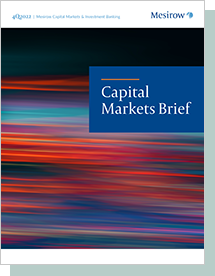Insights
4Q2022 Capital Markets Brief
Share this article
Introduction
Knowledge which is acquired under compulsion obtains no hold upon the mind.”
– Socrates, The Republic, 375 BCE
I would like to underscore for the American people that we understand the hardship that high inflation is causing and that we are strongly committed to bringing inflation back down to our 2 percent goal. Over the course of the year, we have taken forceful actions to tighten the stance of monetary policy. We have covered a lot of ground, and the full effects of our rapid tightening so far are yet to be felt. Even so, we have more work to do. Price stability is the responsibility of the Federal Reserve and serves as the bedrock of our economy. Without price stability, the economy doesn’t work for anyone. In particular, without price stability, we will not achieve a sustained period of strong labor market conditions that benefit all.”
– Federal Reserve Chair Jerome Powell | 12.14.2022
The Federal Reserve Board continued to shake the market landscape in 4Q22. Every step, and importantly, every imagined step by the Open Market Committee tested investor conviction. The Q4 reversal of the US$ trade, the Treasury yield curve inversion, the liquidity drought in the CMO market and the weakness in commercial real estate all responded to perceived Fed signals.
During 1H22, the Fed appeared to be fighting its own data as the Chairman seemed determined to jawbone supply chain and labor costs down in the face of stag-flationary data. The Fed was half right, publishing Q/Q negative GDP data in quarters two and three. But labor markets stayed remarkably robust, while the ill-conceived Russian invasion of Ukraine on February 24 jolted energy markets across the globe, most especially in Europe. The Chinese government’s Covid shutdown policy likely impacted global growth, but it further pressured already stressed manufacturing supply chains adding to inflationary pressures. Q4 US GDP came in at +3.2% while the unemployment rate release on 12.2.2022 was a strong 3.7%. Other than a modest increase in productivity, there was not much material data to support an early 2023 Fed pivot.
Spark
Our quarterly email featuring insights on markets, sectors and investing in what matters

